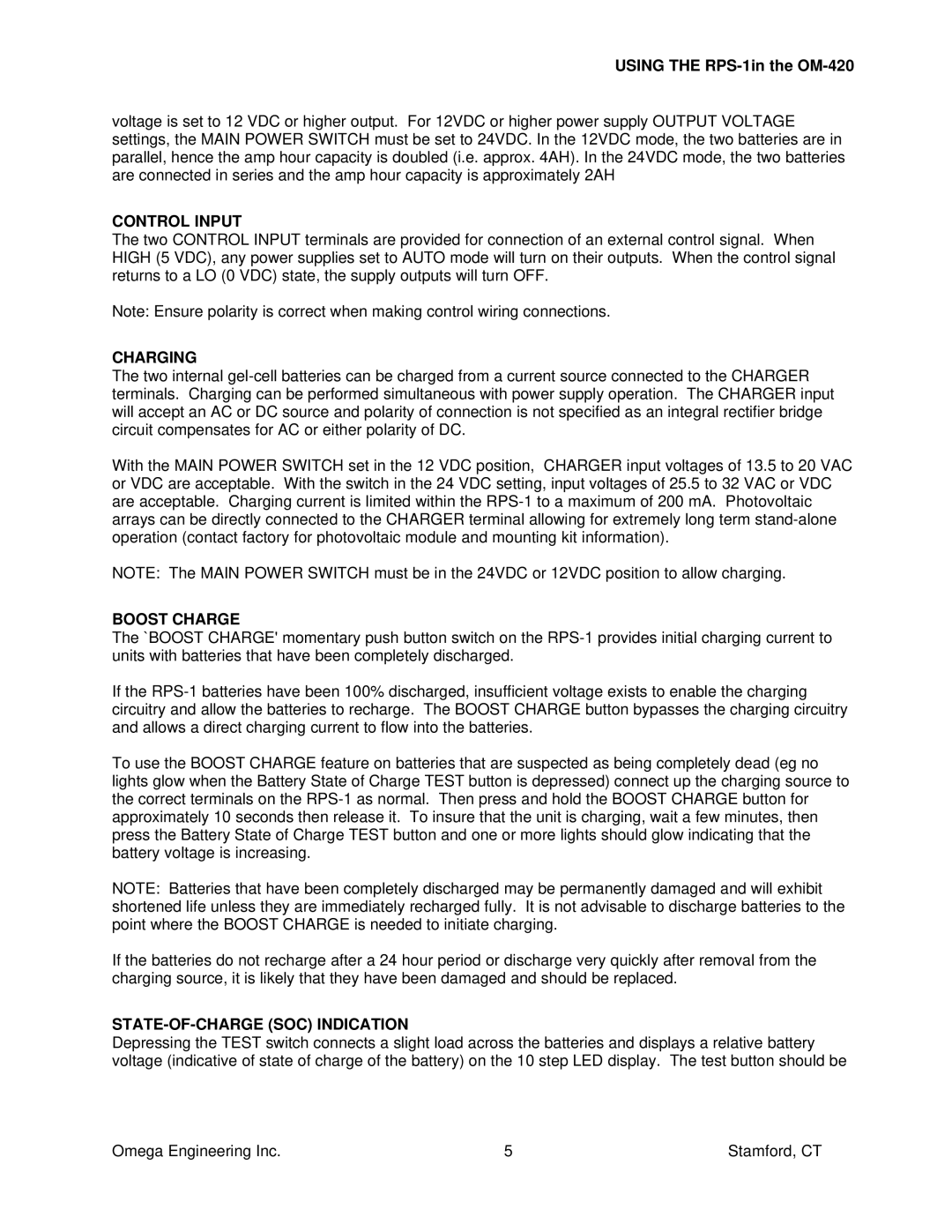USING THE
voltage is set to 12 VDC or higher output. For 12VDC or higher power supply OUTPUT VOLTAGE settings, the MAIN POWER SWITCH must be set to 24VDC. In the 12VDC mode, the two batteries are in parallel, hence the amp hour capacity is doubled (i.e. approx. 4AH). In the 24VDC mode, the two batteries are connected in series and the amp hour capacity is approximately 2AH
CONTROL INPUT
The two CONTROL INPUT terminals are provided for connection of an external control signal. When HIGH (5 VDC), any power supplies set to AUTO mode will turn on their outputs. When the control signal returns to a LO (0 VDC) state, the supply outputs will turn OFF.
Note: Ensure polarity is correct when making control wiring connections.
CHARGING
The two internal
With the MAIN POWER SWITCH set in the 12 VDC position, CHARGER input voltages of 13.5 to 20 VAC or VDC are acceptable. With the switch in the 24 VDC setting, input voltages of 25.5 to 32 VAC or VDC are acceptable. Charging current is limited within the
NOTE: The MAIN POWER SWITCH must be in the 24VDC or 12VDC position to allow charging.
BOOST CHARGE
The `BOOST CHARGE' momentary push button switch on the
If the
To use the BOOST CHARGE feature on batteries that are suspected as being completely dead (eg no lights glow when the Battery State of Charge TEST button is depressed) connect up the charging source to the correct terminals on the
NOTE: Batteries that have been completely discharged may be permanently damaged and will exhibit shortened life unless they are immediately recharged fully. It is not advisable to discharge batteries to the point where the BOOST CHARGE is needed to initiate charging.
If the batteries do not recharge after a 24 hour period or discharge very quickly after removal from the charging source, it is likely that they have been damaged and should be replaced.
STATE-OF-CHARGE (SOC) INDICATION
Depressing the TEST switch connects a slight load across the batteries and displays a relative battery voltage (indicative of state of charge of the battery) on the 10 step LED display. The test button should be
Omega Engineering Inc. | 5 | Stamford, CT |
